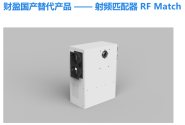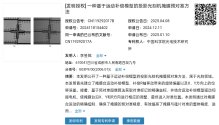The Micro-Processing Equipment R&D Center Project of China Micro-Electronics Corporation was signed and settled in Nanchang High-tech Zone
On April 7, the signing ceremony of the Micro-Processing Equipment R&D Center Project of China Micro-Semiconductor Equipment (Shanghai) Co., Ltd. (hereinafter referred to as "China Micro") was held. Li Hongjun, member of the Standing Committee of the Provincial Party Committee, Secretary of the Nanchang Municipal Party Committee, and Secretary of the Party Working Committee of Ganjiang New District, attended and witnessed the signing. Mayor Gao Shiwen and Chairman Yin Zhiyao of China Micro-Semiconductor delivered speeches respectively. Zhao Jie, member of the Standing Committee of the Municipal Party Committee and Secretary General of the Municipal Party Committee, An Baojun, member of the Standing Committee of the Municipal Party Committee and Deputy Mayor, Ma Yuzhou, member of the Standing Committee of the Municipal Party Committee and Deputy Mayor, and others attended.
Gao Shiwen pointed out in his speech that in recent years, Nanchang has insisted on building a city based on manufacturing, deeply implemented the "8810" action plan, and made every effort to build an electronic information industry cluster dominated by mobile smart terminals and LEDs, and promoted the electronic information industry to achieve "new" and transformation. As a benchmark enterprise in China's semiconductor equipment field, AMEC has been deeply engaged in the field of high-end micro-processing equipment for many years, and has been widely recognized by the market, ranking among the top in the global semiconductor equipment supplier rankings. The signing of this project is not only AMEC's high recognition of Nanchang, a hotbed of innovation and fertile ground for entrepreneurship, but will also inject stronger momentum into the development of Nanchang's advanced manufacturing industry and new quality productivity. Nanchang City will continue to be a "gold medal waiter" with heart and a "chief waiter" with affection, and fully support AMEC and its suppliers and customers to invest and start businesses in Chang to become bigger and stronger. AMEC is expected to continue to pay attention to Nanchang, support Nanchang, and cultivate Nanchang, combining its advantages in capital, technology, management, and brand with the development of Nanchang, promoting cooperation between the two sides in more fields and at a deeper level, and jointly create a new situation of mutual benefit and win-win.










